With some moving company reps covering 50,000 miles a year or more, the chances of disaster are high if they are not spot-on behind the wheel. Here, deputy editor David Jordan, dives in at the deep end to find out a few tricks of the trade from IAM.
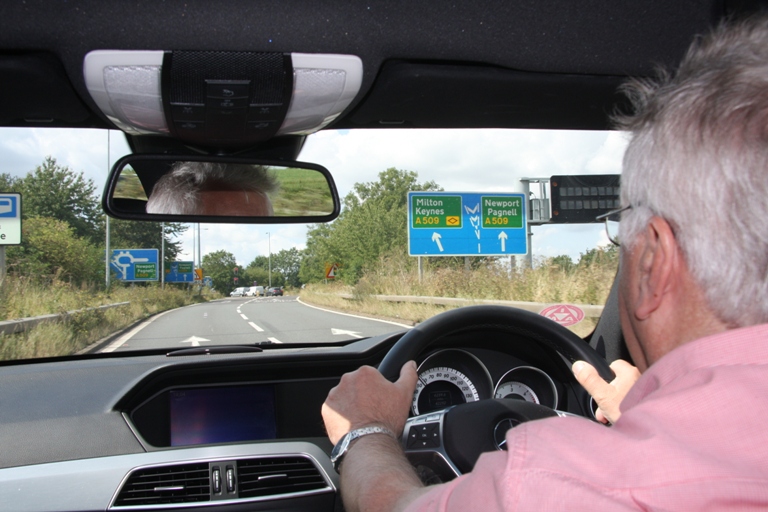
Most of us think our driving is at least above average, but how can we be sure? I passed my test in the 1960s and haven’t taken any training since, so when the Institute of Advanced Motorists invited me to take their Skills for Life course and the IAM advanced test, I decided to give it a go.
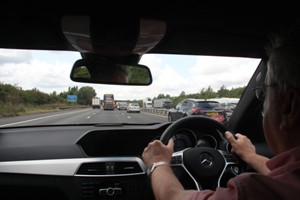 It’s more years than I care to remember since I passed my driving test, but like most people I’ve always thought my driving was well above average and that there wasn’t much point in taking any extra training. After all, I hadn’t had an accident – well not a serious one – during the past 20-odd years and anyway the ones I had had were the other bloke’s fault, not mine.
It’s more years than I care to remember since I passed my driving test, but like most people I’ve always thought my driving was well above average and that there wasn’t much point in taking any extra training. After all, I hadn’t had an accident – well not a serious one – during the past 20-odd years and anyway the ones I had had were the other bloke’s fault, not mine.
So when the Institute of Advanced Motorists (IAM) invited me to put my skills to the test with an observed drive I was happy to give it a try. My observer was Alan Pembroke from my local IAM Group and I arranged to meet him at his home in Bedfordshire for my one hour assessment. A couple of days before my drive I bought a copy of the Highway Code, just to brush up on my road signs and stopping distances, not that I needed it of course.
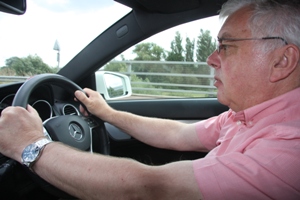
Alan is the Chief Observer at the Beds and North Herts Group and has been a member of the IAM for over 20 years, so I was in good hands. After Alan had checked my licence and insurance we set off, a little nervously, and headed for the A1. The observed drive is not a test -that comes later - so there’s no pass or fail, it’s just a way of finding out where you’re at and to find out what needs to be improved.
“At the end of the road turn right please,” said Alan as we left the housing estate. That’s when I made my first mistake, putting my indicator on when there was no one around to see it, a sort of automatic thing I suppose. Advanced drivers driv e to a system based on the one the police use, so giving a signal when there’s nobody there shouldn’t happen. Every move should be carefully considered not done automatically without thought. Alan was a great instructor/observer and quickly put me at my ease, but it soon became clear I had a lot to learn. Driving too close to the car in front, signalling too late before overtaking on the motorway and not using the wheel correctly were just some of the things I needed to put right.
e to a system based on the one the police use, so giving a signal when there’s nobody there shouldn’t happen. Every move should be carefully considered not done automatically without thought. Alan was a great instructor/observer and quickly put me at my ease, but it soon became clear I had a lot to learn. Driving too close to the car in front, signalling too late before overtaking on the motorway and not using the wheel correctly were just some of the things I needed to put right.
During the next few sessions – I had eight in all – Alan showed me how to improve my observations, especially on rural roads where, apparently, most accidents happen. He also showed me how to assess the severity of bends and gave me tips on defensive driving, correct positioning, correct use of the horn, and how to anticipate the mistakes other drivers may make that could put me and others in danger. He a lso introduced me to commentary driving, which is a very good way of improving concentration. The police use it during their advanced courses and I really found it helped. Most of all, the course made me think about my driving rather than just doing things automatically and getting hot under the collar when other drivers were inconsiderate or made mistakes.
lso introduced me to commentary driving, which is a very good way of improving concentration. The police use it during their advanced courses and I really found it helped. Most of all, the course made me think about my driving rather than just doing things automatically and getting hot under the collar when other drivers were inconsiderate or made mistakes.
Soon I was ready to take the IAM test, or Skill for Life challenge as the Institute prefers to call it. The test takes about an hour and a half and is conducted by a police Class One driver – so no pressure! My examiner Steve Spring is a retired police driving instructor who now, for his day job, teaches the local fire brigade ‘blue light driving’. Steve met me in Bedford and after checking my licence and making sure I could see where I was going we set off into darkest Bedfordshire. Steve explained that he wouldn’t start the test until we’d covered a couple of miles to help me settle in – my efforts to look cool and relaxed obviously didn’t work!
Although safety is the cornerstone of advanced driving you are expected to make good progress, dawdling along at 40 in a 50 limit for example is not on, and could cause you to fail the test. Steve directed me along country roads with blind bends and tricky junctions before returning down fast dual carriageways and ‘A’ roads and finally back into town.
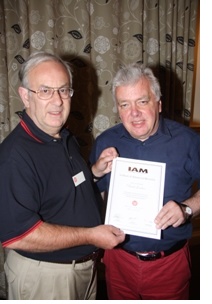 I must admit I thought I’d done pretty well as we pulled back into the car park for the de-brief. Using his notes Steve took me through every twist and turn of the 40-odd mile route pointing out the good points and the things I could have done better. The good news was I’d passed! I had become an advanced driver, and had indeed gained a skill for life.
I must admit I thought I’d done pretty well as we pulled back into the car park for the de-brief. Using his notes Steve took me through every twist and turn of the 40-odd mile route pointing out the good points and the things I could have done better. The good news was I’d passed! I had become an advanced driver, and had indeed gained a skill for life.
Many moving company reps spend most of their lives behind the wheel. Some cover vast distances having to battle busy schedules, fatigue, congestion – and bring in the business too. During my training I had learned a lot that would help me stay safe and protect other road users. Good driving requires the driver to have the right attitude, be observant, show courtesy to others and be able to predict what someone might do next. A simple tip could mean the difference between a relaxed or an anxious passenger, an expensive bump or a near miss, an ambulance ride or a walk away, surviving or not.
I would urge everyone who drives for a living to take extra tuition. It makes sense for employers too: wherever and whenever an accident happens, a hospitalised employee is not earning you money.
www.iam.org.uk
0845 126 8600
Photos: Top 5 - During the course of his lessons David learned techniques that improved his driving on both motorways and rural roads, as well as commentary driving - a way of improving concentration used by the police. Next - David receives his IAM Advanced Driver certificate from Arthus Cushway, David's local IAM Chairman.
Skills for Life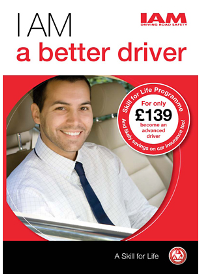
The Skills for Life course can be arranged through your local IAM group, there are over 200 around the UK. The fee of £139 gives you one year’s membership of the IAM, an assessment by an AIM observer followed by as many sessions as you need to prepare you for your advanced test, plus the test fee.
Other benefits include competitive insurance rates through IAM Surety, one year’s road side assistance from the RAC, and membership of your local IAM group. Local groups have regular meetings and arrange various activities and driving-related events.
International IAM Groups
The IAM has groups in many other countries around the world. Visit www.iam.org.uk and click on ‘Local Groups’ to find a branch in your area.
Click here to view the next Editor's pick.